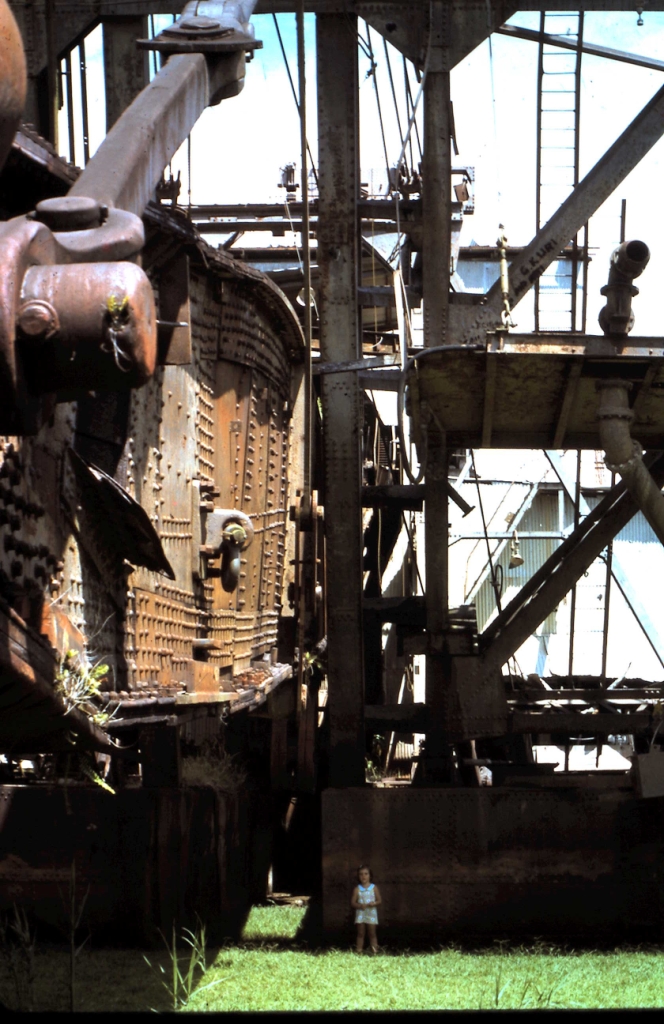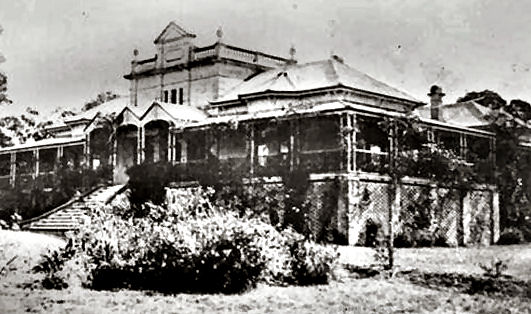|
|
||
|
||
|
Privacy Policy | Editorial Policy | Profit Policy | Join the Association | List of Members | Contact us | Index | Links |
||
|
Back Go to page: 1 2 3 4 5 6 7 8 9 10 11 12 13 14 15 16 17 18 19 20 Forward
|
||
|
|
||
|
The People I meet.
|
||
|
Kirsty McKenna, Oneself and Carey Boyce. |
||
|
I normally attend the Anytime Fitness Gym at Enoggera (Brisbane) where Cameron Wilson from Active Body Conditioning works rigorously to keep my hard working body in tip top condition and the envy of all. Cameron is often heard telling others that in my case he is thankful he has a wonderful and compliant product on which to work, though being a male he is completely unaware that the reason this is so is that one’s body exudes a natural toning and alluring Radstechitis pheromone which is normally undetected by mere males.
This is not the case with the female species though.
Just the other day, as I was in the middle of a vigorous 4 hour workout, these two lovely ladies, Kirsty and Carey, who were about a block away at the time, caught a wiff of that alluring Radtechitis and being only human, dropped everything and rushed to the gym to try and find the source of that unavoidable attraction. Try as I might, I was unable to deter these two delightful ladies who insisted on draping their persons upon one’s self in the vain attempt of securing some Radtechitis for themselves.
Unfortunately it’s a sad but undeniable fact, those with the natural Radtechitis pheromone must cop these moments in good faith and uncomplainingly endure them with a stiff upper lip.
Laverton has such a lot for which to answer.
Kirsty is
the Business Development Manager for
FlexiCommercial (part of Flexigroup), a finance company, based at
Milton (Qld). FlexiGroup offer (nationally) a wide range of unique
finance solutions for consumers and businesses of all sizes through
their trusted network of partners. They specialise in innovative leasing
solutions, broadband, mobile
Kirsty looks after many national accounts which sees her travelling frequently and widely. She has 2 teenage children who keep her very busy with extracurricular activities. Her son has only recently started going to the gym with mum and they are starting to mould into a team, pushing and urging each other on with weights and effort on the machines. Her daughter studies dance at QUT.
Kirsty weight trains 5 days a week, as well as doing cardio work – mixing it up with rowing, running on the treadmill, bike and cross trainer, as well as some high intensity interval training (HIIT). She also does some Muay Thai for some extra punch!!
She hates political correctness, mainly, she says, because the ones enforcing it are usually the bullies – bullying us into acting and thinking the way they consider is ‘appropriate’. She prefers the Australian culture of larrikin behavior and irreverence.
If you’re looking for finance, irrespective of where you are in Oz, why not give her a call, she just might have the answer for which you are looking. She can be reached on (07) 3367 2711.
Carey was born in South Africa and moved to Australia 7 years ago. She has two teenaged kids and works in health software. She is also a midwife. As a hobby, she is a power lifter and competes in the GPC Federation (Global Powerlifting Committee)
|
||
|
|
||
|
|
||
Pedro’s Patters.
New Guinea Trainers.
Jeff Pedrina.
Some readers may remember these sorties, which were part of the Dakota, and later the Caribou conversion course at 38 Squadron. Usually 2 aircraft were programmed, each accommodating the course members and of course two QFIs.
One in particular I remember during my Caribou conversion. The official start point was Port Moresby in PNG. We flew from there into Bulolo, about one hour's flying time from Moresby.
Bulolo is a town in the Morobe Province of PNG. It
was once an important gold dredging centre. We each did some circuit
work before calling it a day. Our QFIs had arranged accommodation at a
resort hotel, high up in the hills. Our transport was an ancient bus
driven by a crazy priest whose driving along the impossibly narrow road
with drop offs on
Once settled in we met in the salubrious dining room for pre-dinner drinks. It was at this point that I discovered what an Imprest Holder's duties were. Two of the junior members of the endorsement team (myself being one) had been nominated as Imprest holders, to the tune of £1200. We ordered a sumptuous dinner, minus the dessert. We were told by our QFI masters that the dessert would be covered by the Imprests, with a wink and a nod to the proprietors. The dessert happened to be the fine wine and beer we had been drinking throughout the meal. Of course we, the said Imprest holders, duly signed for the "desserts". There were no repercussions on our return to Richmond.
Next day we continued on to Wau, also in Morobe province. The strip was 3100 ft long with a 12% slope, a fearsome combination for any pilot, and a history of disasters. We all did circuits there and were told in no uncertain terms that on changeover we were to park at the uphill end at 90 degrees to the strip before applying the park brake.
Old gold dredge at Wau.
There were many stories about Wau. Some time later we nearly lost one of our C130s when the pilot did not follow the parking instruction and stopped his aircraft and shut down at the uphill end of the strip without turning at right angles. As the crew were walking towards the terminal building his peripheral vision picked up the C130 moving backwards down the strip. Throwing caution to the winds, and looking after his career he ran after the aircraft, got it started and applied full power before turning it 90 degrees. His reputation remained intact.
After Wau we flew on to Mount Hagen, Wewak, Nuku, Maprik, down the Strickland gorge and back to Wewak. Flying down the gorge above a solid layer of cloud, and over an outpost called Telefomen, which apparently had a regular supply run we were told an unbelievable story about how the local pilots penetrated the ever present overcast. They let down an object on a rope to gauge the height above the air strip. Using this dubious procedure they were able to penetrate the cloud layer and make a visual approach.
We returned to Richmond via Horn Island and Townsville.
|
||
|
|
||
Brisbane: Past and Present
Some time ago we had an article on Brisbane’s trams (HERE) where we had a bunch of “then and now” photos of different places around Brisbane. We had the “then” photos which we ‘pinched’ from a friend and had a lot of fun driving around trying to find each spot and then matching it with the photo from days of old.
We’ve got some more, though this time they are of famous buildings around Brisbane and anyone who has lived here (or still does) will recognise them instantly.
Run your mouse over each old pic to open the “now” pic. |
||
|
Rode Rd.
The house below, which was built in 1927, is situated on the corner of Sandgate and Rode Roads at Nundah, opposite the Supercheap store which is on Sandgate road now. The road in front of the house is Rode Rd.
|
||
|
|
||
|
Continental Hotel.
Right across the road from the Transit Centre and dating from 1884, is one of Brisbane's oldest hotels, the heritage listed Transcontinental Hotel (below). The hotel was built in a prime position for travellers to Brisbane by rail as it is situated on the corner of Roma St and George St, directly opposite Roma St station.
|
||
|
|
||
|
|
||
|
Delamore House.
“Delamore” (below) was built for a large family and as the home of a very prominent Brisbane identity. It was designed to house guests and provide space for large parties, weddings and other celebratory events. The house. which is of brick and cement, was built in 1887 and contains eleven rooms, exclusive of pantries, cellars, kitchen, and servants apartments. It also has a vestibule, tower, hall, veranda all round, two stall stable, coach house, washhouse and sits on 10 acres of land.
Delamore reflects the needs of the times over the last 125 plus years. It started life as a luxury 19th Century Grand House which was built for prestige and entertainment when there was a young population, when families were large and elderly people were a small proportion of the community. In 1939 the Missionary Franciscan Sisters bought Delamore for a novitiate and in recent years developed it into accommodation for people over fifty five. It contains Units and Serviced Apartments with 24 hour emergency care.
Today the population is ageing, families are small and the elderly form a great and growing proportion. People are living much longer but retirement age is much the same. More of the elderly can now live independently and Delamore caters for these people.
The building is located at 115 Turner Rd in Kedron, situated between Mt Alvernia College and St Anthony’s school. |
||
|
|
||
|
Howard Smith Wharves.
Underneath the northern side of the Story Bridge on the river bank is what used to be the Howard Smith Wharves. They nestled in below the cliff face at New Farm and were the main commercial port for Brisbane for many years. The picture below was taken in 1938 and shows the wharves prior to the opening of the Story Bridge. The cliffs in the background, at New Farm, were excavated to allow the widening and deepening of the river to accommodate larger ships.
When the completion of the Story Bridge made it difficult for large ships to continue to use the wharves, Brisbane's main commercial shipping activity moved to Hamilton, although some smaller vessels continued to berth here. Air raid shelters were constructed during the war years and after the war, the area was used by the State Government for the Water Police headquarters and also as a storage area.
Some of the wharves' structure was lost during the 1974 floods. |
||
|
|
||
|
|
||
|
Valley Post Office.
One of Brisbane’s most ornate Post Offices was constructed in 1887 in Fortitude Valley on the corner of Ann and Ballow Streets. Post Office business was conducted on the ground floor whilst the postmaster and his family lived upstairs. In 1929 this post office was the second-highest distributor of pension payments in the country but like a lot of other Post Offices in the country, the building is no longer a post office but has been refitted as a hotel/nightclub called GPO. Although the original mansard roof was removed around the time of WWII, the building retains its old-world charm.
|
||
|
|
||
|
|
||
|
Albion Fire Station.
There is only one old suburban Fire Station building made of brick still standing in its original form in greater Brisbane and it is this one (below) which is on Bridge St, opposite Hudson Rd at Albion. The brick construction and the impressive dimensions of this building indicate that it was designed to be a regional station for the northern suburbs. It replaced an earlier fire station at Windsor and another at Hamilton. The foundation stone of the building was laid on the 1st December 1925 and the completed station was opened on the 17th January 1927. The name of the station is still present in the central bay of the building at the top, although the fire station was decommissioned in 1961.
The building was probably quite popular with the officers stationed there. As well as space on the ground floor for two appliances with requisite firefighting equipment, there was also space for a dormitory, a mess room, a kitchen, a room with private facilities for the district officer, and a billiard room large enough for a full-size table. The upper floor contained two flats for officers and their families. |
||
|
|
||
|
|
||
|
All Hallows School.
Two years after the separation of the colony of Queensland from New South Wales, All Hallows' School for Girls was founded by the Sisters of Mercy, and the first pupil, Annie Tighe, from Drayton on the Darling Downs, was enrolled as a boarder on 15 December 1861. All Hallows' was the first secondary school for girls in the infant colony of Queensland and its history affords insight into the nature of the changing role of women in our society.
In 1879, the decision was taken to present candidates for examination at the University of Sydney; All Hallows' being the first convent school to take this step. After World War II, when the knowledge explosion brought changes in the way in which science, social studies and languages were taught and learnt, Aquinas Hall was built. It was equipped with the most modern science laboratories, social science and language facilities then available. Since then, major changes have occurred in teaching methods including the increased need to educate for information technology all of which has led to the major refurbishment of buildings. |
||
|
|
||
|
|
||
|
Good judgment comes from experience, and a lot of that comes from bad judgment.
|
||
|
Boggo Road Jail.
Brisbane's most notorious jail for both men and women was “Boggo Road” at Dutton Park, which first operated for male prisoners in 1883. Prior to that, there had been jails at Petrie Terrace and St Helena Island. A separate facility for women was opened in 1903. The pic below was taken around the year 1936. The jail was officially known as "Brisbane Jail" but was commonly known as "Boggo Road Jail" because Annerley Road became known as "Boggo Road" due to its poor condition.
In 1913, Queensland was the first Australian state to abolish capital punishment, but before then, 42 executions were carried out at the prison. The jail finally closed in 1992 following a great deal of prisoner unrest during the 80s, largely as a result of the deteriorating conditions and poor sanitation there. |
||
|
|
||
|
|
||
|
Bardon House.
Bardon House (41 the Drive) was built in 1863 by well-known Brisbane builder and early mayor of Brisbane, Joshua Jeays. Jeays had developed a quarry at Woogaroo (now called Goodna) and this house was built from stone sourced there. Bardon House is a two-storey Victorian Gothic structure with a steeply pitched roof, gables and dormer windows.
The suburb was named after the house.
Brisbane's Roman Catholic Archbishop Duhig bought Bardon House in 1925 and in 1938, Bardon House became the centre of a school. The Missionary Franciscan Sisters moved in on January 19, 1938 to establish the new school, to be known as St Josephs and an enclosed veranda were made to accommodate a classroom. St Joseph's school was opened with 31 male and female pupils and by the end of the year, a separate school room was constructed on the site.
Despite temporary closure in 1942 due to the Second World War, the school continued to grow. Bardon House is now surrounded by many school buildings which were erected as the need for more space arose. |
||
|
|
||
|
|
||
|
Treasury Casino.
In 1889, the treasury building was opened and it contained the offices of Queensland's Premier, as well as the Treasury Department and other State government departments.
It was built on a site that had been earmarked for Government use since around 1825. The original buildings on the site had been built by convicts and were used as military barracks until about 1864, when the military moved out and the Treasury Department moved in. It was built in three stages between 1886 and 1928, the picture below was taken in 1898.
|
||
|
|
||
|
|
||
|
Long ago, when men cursed and beat the ground with sticks, it was called witchcraft. Today it's called golf |
||
|
|
||
|
Mt Carmel Convent.
The convent, which is on Bay Terrace at Wynnum, was home to the Sisters of Mercy. It was designed by RS Dods prestigious architectural firm and constructed in 1915, yet another real estate coup for Archbishop Duhig. |
||
|
|
||
|
In the early 20th century the Sisters of Mercy taught local school children in the lead up to a public school being established. Today it is notable for retaining the classic intact lay-out of a convent of the time – featuring a dining hall, chapel, reception hall and sleeping cells. A small contingent of Sisters of Mercy still use the main convent residence as a seaside holiday retreat.
As the numbers of Sisters of Mercy started to decline, there were only 2 living there, the home, which cost $16,000 to build, was sold for the record price of $1.6 million. It was bought by a developer who spent $1M on it intending to turn it into a bed and breakfast resort and a venue for events and weddings with a coffee shop and restaurant however after three years fighting the local council, as the building was heritage listed in 1999, approval was finally given for use as a residence and B&B. |
||
|
Eventually you reach a point when you stop lying about your age and start bragging about it.
|
||
|
|
||
|
|
||
|
|
||
|
Back Go to page: 1 2 3 4 5 6 7 8 9 10 11 12 13 14 15 16 17 18 19 20 Forward |
||
|
|


 each side made our hair stand on end.
each side made our hair stand on end.
.jpg)
.jpg)

.jpg)
.jpg)
.jpg)
.jpg)
.jpg)
.jpg)
.jpg)